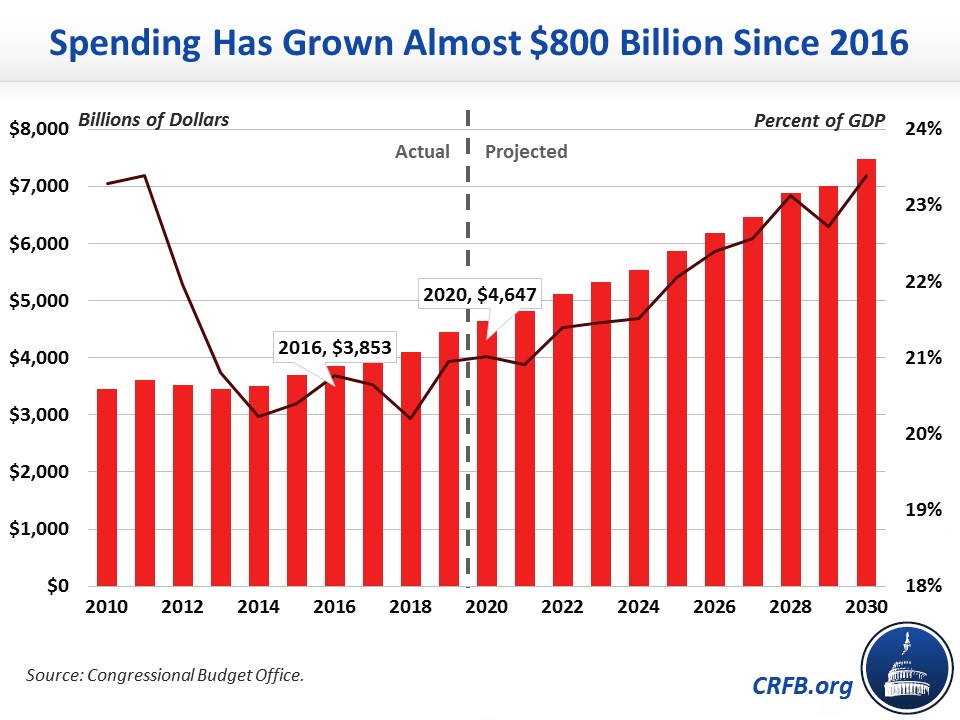Spending Has Increased $800 Billion Under President Trump
President Trump's Fiscal Year (FY) 2021 budget calls for about $3.2 trillion in net deficit reduction over the next decade by our estimate, including nearly $2 trillion in cuts to discretionary spending. The Administration cites the need to restrain spending as its way to address our unsustainable debt trajectory. Yet, since President Trump's election in 2016, total spending has grown by nearly $800 billion – from $3.85 trillion (20.8 percent of Gross Domestic Product) in 2016 to $4.65 trillion (21.0 percent of GDP) in 2020.
Total federal spending has grown every year since 2013, growing from $3.45 trillion in FY 2013 to a projected $4.65 trillion in FY 2020. That trend has only accelerated since 2016, with spending increasing by nearly $340 billion between FY 2018 and 2019 alone. Spending in FY 2020 is projected to be at least $200 billion more than 2019, about two-thirds of which is due to increasing mandatory spending and net interest, while the remaining third comes from recent discretionary spending increases.
This spending growth is true both in dollars and as a share of the economy. While spending actually shrank as a share of GDP between 2016 and 2018 – from 20.8 percent of GDP to 20.2 percent – that trend has entirely reversed. Spending is now growing once again as a share of GDP, projected to stay around 21 percent of GDP in FY 2020, which is its highest mark as a share of GDP since 2012. While spending as a share of GDP will fall slightly in 2021, it is projected to grow almost every year after that, reaching 23.4 percent of GDP by 2030.

To be clear, much of this growth is due to factors outside of the President's control – largely autopilot spending from both Social Security and Medicare due to the aging population. However, President Trump has proposed nothing to shore up Social Security's retirement program, and his Medicare proposals have largely been ignored. Worse, he's signed into law over $2.1 trillion in ten-year discretionary spending increases alone, all of which will be added to the debt.
It will take leadership to put our debt on a downward sustainable path, and that will require more than just paying lip service to reining in spending. Instead, lawmakers and the President need to come together to make entitlement programs solvent, increase tax revenue, and cut other wasteful spending. At the very least, the President must insist that any new spending or tax cuts are offset with equivalent spending cuts or tax increases.

